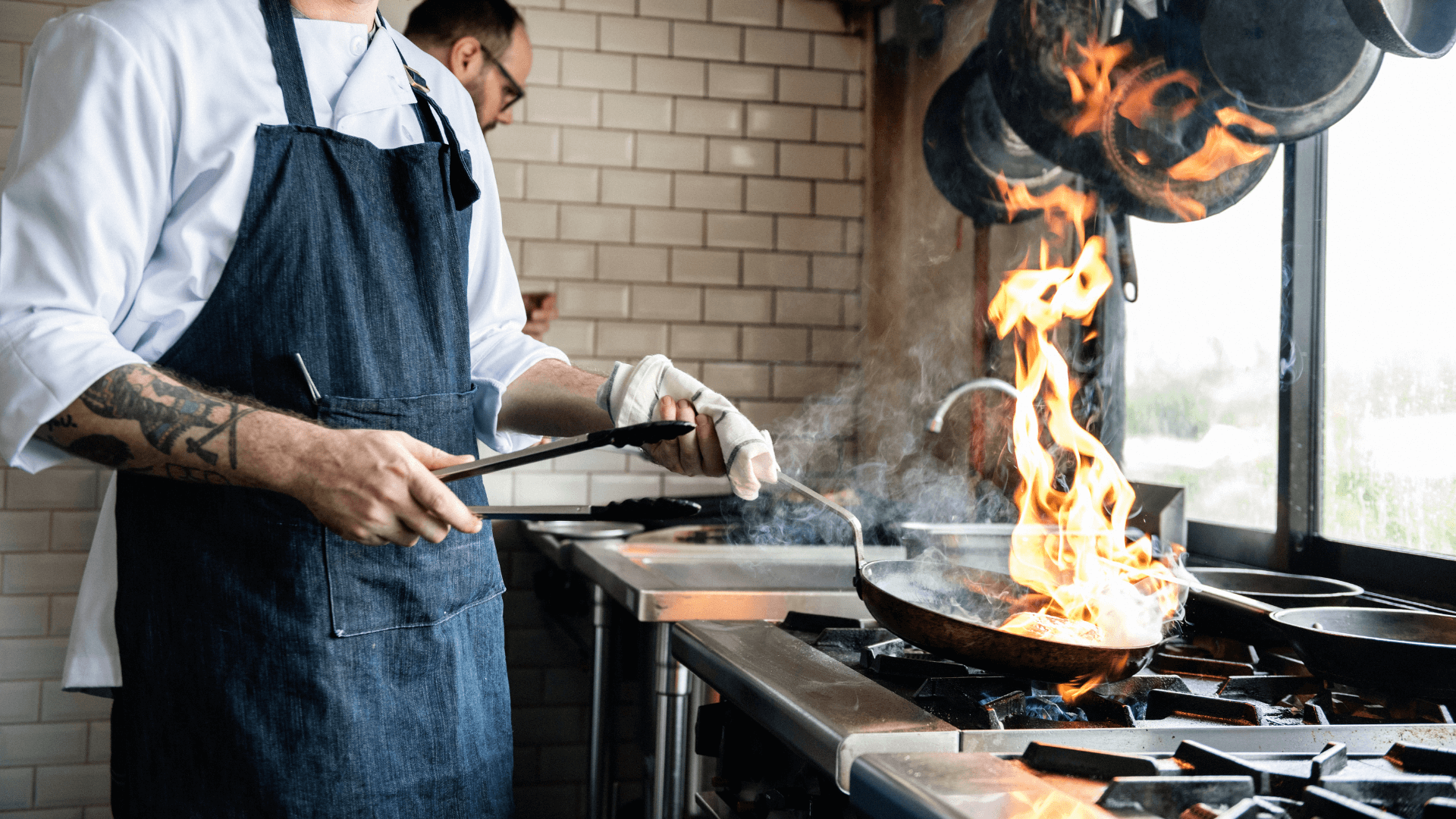Whether you’re a professional chef or a home cook, occasionally coming up with culinary inspiration can be tricky. Some days it feels like there are too many new flavours and cuisines to ever get around to, but other times I find myself staring at a blank page (or into the fridge), totally unable to think of a single idea.
Cooking is a creative pursuit and, like any artistic endeavour, can’t be forced. But, innovative thinking can be encouraged. After years of constantly needing to create new recipes, I have come up with a bunch of systems and resources to get me through “chef’s block”, and inspire new waves of creativity.
1. Write EVERYTHING down
Ideas come when they do, often unexpectedly. I’ve made a habit of writing down absolutely any idea that comes into my head on a scrap of paper or as a note on my phone.
I’m often surprised by how many ideas I’ve forgotten when I re-examine these notes, even just a couple of days later.
Being a touch over eager, I then transfer these ideas into a master notebook. I can wholeheartedly recommend using an alphabetised address book and organising ideas and recipes by main ingredient. This makes it so much easier to locate later. The same applies when you’ve made an amazing dish. Write down what you did immediately before the brilliance disappears.

Inspiration can come at any time, have something on hand to jot them down. (Image: Freepik)
2. Take advantage of the inexhaustible resources in books and online
The world of information is pretty much limitless. Amateur enthusiasm for food and cooking has exploded in recent years, which is reflected in the frankly overwhelming number of books, blogs, YouTube channels and other sources of information out there.
The real challenge is filtering through the mediocre content to find the gems.
And then refer to point one above: write them all down in a way that’s easy to access later. Below are some of my favourite sources of inspiration.
- Recipe books: A really great genre of recipe book is the flavour pairing guide. The Food Thesaurus by Niki Segnit is a staple in many chef’s homes, including mine. This excellent book is alphabetised by ingredient (a chef after my own heart) and suggests multiple flavour pairings that work well for each entry. The same author has recently released a second edition that focuses mainly on plant-based flavours. Similarly useful books are The Flavour Bible and The Flavour Equation.
- YouTube: For YouTube channels, try Bon Appetit, The Staff Canteen and Munchies by Vice. The NYT Cooking channel is also great, and bypasses that frustrating paywall that you encounter when trying to access their recipes on other platforms.
- Websites: If you’re looking for specific techniques for a dish you’d like to try, my go-to’s are Great British Chefs for the classics, Bread Ahead for baking, and Dessert Person for sweet treats. Kenji Lopez-Alt (of Food Lab fame) is great at explaining the science behind food, which can bring better consistency to your cooking.
Newsletters: Signing up for regular foodie newsletters brings in a regular dose of inspiration. My subscriptions are with Eater for all the latest restaurant news (and other foodie topics), Gastro Obscura for interesting ingredients and foodie facts, and Alicia Kennedy for plant-based ideas.
3. Think about balancing flavours and textures
Approaching recipe development as a technical challenge can give structure to the creative process.
First, tick off boxes of different flavour profiles: salty, sweet, sour, bitter, umami. Checking whether you have all of these elements in a dish can help identify ingredients you might want to add.
For example, take a simple tomato salad: tomatoes are naturally umami, acidic and sweet (when in season; like they are now). So all you’d need to add here is a pinch of Maldon salt and a drizzle of olive oil for the bitter note. Looking for a bit of crunch? Add sourdough croutons. Creaminess? Some torn burrata cheese. Checking these boxes will ensure that your dish is pleasing to all the senses.
4. Focus on a specific ingredient or technique
Focus your dish around a vegetable that’s in season, an old family favourite, or a technique such as fermentation. This acts as a focal point that you can build on. Visiting a farmer’s market is a perfect way to identify an ingredient that will shine without much overthinking.
As we know, in-season fruit and vegetables have the most flavour, and need only a little nudge to become the star of their own dish.
Even simply looking at a seasonal fruit and vegetable guide can help focus your efforts.
What’s in season – and when?
Download our seasonal guide to fruit and vegetables in South Africa to keep track of which produce is in season throughout the year.
5. Eat out, or look at restaurant menus
I like to take photos of interesting restaurant menus when I eat out. I’m not suggesting copy-pasting from other chefs, which is obviously immoral, but taking a snippet of an idea from multiple sources can result in something entirely new that has your own personal stamp on it.
I find that just seeing what other chefs are doing is an excellent reminder of just how many options there are, which rekindles my own enthusiasm to cook.
Creativity in any field doesn’t come on demand. Don’t beat yourself up if you’re feeling uninspired, but do take positive steps to get yourself out of a rut and into a new creative chapter. Maximising exposure to ideas will help you to build your own library that you can refer back to whenever the need arises.



0 Comments